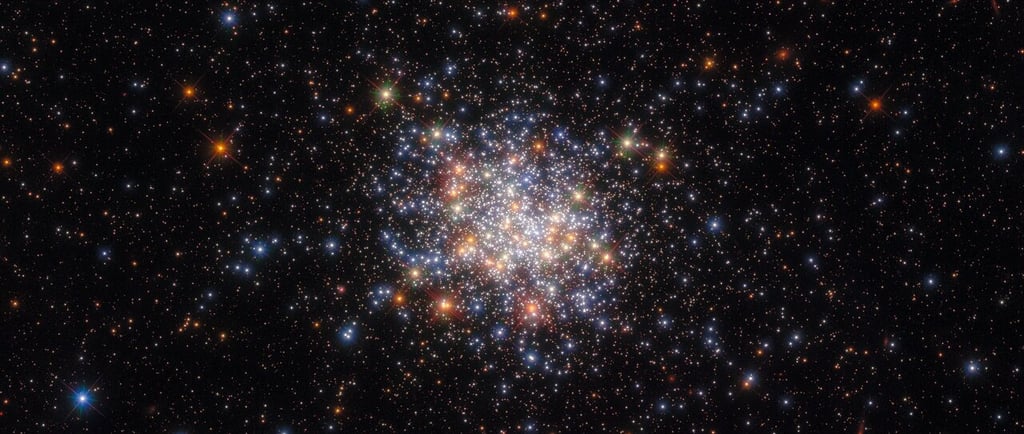NGC 1755: A Gem of Stars


Introduction to NGC 1755
NGC 1755, an open star cluster residing in the Large Magellanic Cloud, presents an intriguing subject for astronomical observation. Located within the Dorado constellation, this captivating cluster is approximately 120 light years in size, showcasing a unique formation that blurs the lines between open clusters and globular clusters. With its notable diameter and brightness, NGC 1755 continues to attract the attention of both amateur and professional astronomers alike.
Characteristics and Features
At a diameter of approximately 2.6 degrees, NGC 1755 exhibits an apparent magnitude of 9.9, making it visible through moderate telescopes. The cluster is composed of numerous stars that are closely associated, allowing researchers to study its structure and formation in detail. Unlike globular clusters, which are tightly compact and typically contain older stars, NGC 1755 is characterized by its loose configuration and a more diverse stellar population, revealing insights into stellar evolution.
The Importance of NGC 1755 in Astronomical Studies
NGC 1755 offers a valuable opportunity for researchers to explore stellar formation and development, particularly within environments that resemble early galaxy formations. The presence of younger stars provides scientists the chance to witness different stages of stellar evolution. Furthermore, studying this cluster allows astronomers to gain insights into the behavior of stars in varied developmental phases, contributing significantly to the broader understanding of cosmic phenomena.
In conclusion, NGC 1755 stands out as an extraordinary feature of the Large Magellanic Cloud, emphasizing the beauty and complexity of our universe. Its size, luminosity, and unique characteristics make it an essential focal point in the ongoing study of star clusters and formation processes. As research continues, the mysteries of NGC 1755 will undoubtedly yield more knowledge, enhancing our comprehension of the vast cosmos in which we reside.
